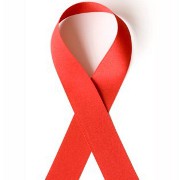 Photo: Getty Images
Photo: Getty Images
HIV is the human immunodeficiency virus. It is the virus that can lead to acquired immune deficiency syndrome, or AIDS. There are two types of HIV, HIV-1 and HIV-2. In the United States, unless otherwise noted, the term “HIV” primarily refers to HIV-1.
The Centers For Disease Control, or “CDC” estimates about 56,000 people in the United States contracted HIV in 2006. While there have been great strides in the prevention of HIV transmission and care of HIV infection and AIDS since AIDS was first recognized in 1981, many people still have questions about HIV and AIDS.
The information below is designed to answer some of these questions based on the best available science.
Basic AIDS FACTS AND STATISTICS
Both types of HIV damage a person’s body by destroying specific blood cells, called CD4+ T cells, which are crucial to helping the body fight diseases.
AIDS is the late stage of HIV infection, when a person’s immune system is severely damaged and has difficulty fighting diseases and certain cancers. Even in my recent memory, people often succumbed to a deleterious progression from HIV to AIDS in a short time span.
Since the development of certain highly active combinations of medications in the 1990’s, people fare better, for far longer. Even people who aren’t in the end stages of HIV or in the throes of AIDS would do well on many of the currently used medications.
Since there are so many other diseases and health risks associated with HIV, left untreated a person could experience cardiovascular disease, kidney disease, liver disease, and cancer.
Support services are also available to many people with HIV. The help of friends, loved ones and family, as well as social workers, medical professionals and psychological counselors are all crucial in treating this disease and maintaining an optimal state of health for the patient.
Finding a good support team can also help with educating the patient and their loved ones about HIV/AIDS and can help prevent its spread.
Currently there is no cure for HIV infection. Even though there have been major advances in diagnosing and treating HIV infection, in 2007, 35,962 cases of AIDS were diagnosed and 14,110 deaths among people living with HIV were reported in the United States.
Sources:
Centers For Disease Control and Prevention
Retrieved from the internet on September 16, 2011
http://www.cdc.gov/hiv/resources/factsheets
Department of Health and Human Services
Centers For Disease Control and Prevention
Basic Information about HIV and AIDS
Retreived from the internet on September 16, 2011
http://www.cdc.gov/hiv/topics/basic
Aimee Boyle is a regular contributor to EmpowHER
Reviewed September 20, 2011
by Michele Blacksberg RN
Edited by Jody Smith






Add a Comment1 Comments
Since its discovery, AIDS has caused an estimated 36 million deaths worldwide (as of 2012). As of 2012, approximately 35.3 million people are living with HIV globally.
May 24, 2014 - 8:28amThis Comment